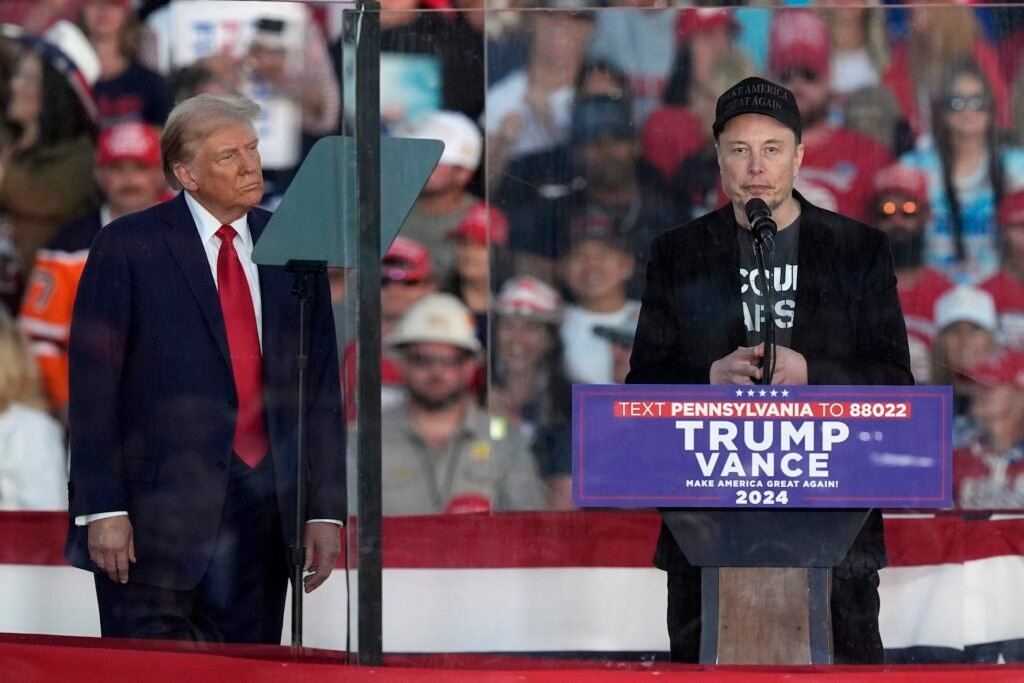On his first day in office, President Trump signed a series of executive orders that sent shockwaves through the global new energy vehicle (NEV) industry. Among these were the repeal of the electric vehicle (EV) mandate and the withdrawal from the Paris Climate Agreement. These actions have far – reaching implications for the entire NEV ecosystem.
1. Impact on the US New Energy Vehicle Market
1.1 Slowdown in Market Growth 📉
The repeal of the EV mandate and the potential cancellation of EV tax credits will significantly increase the total cost of ownership (TCO) for consumers looking to purchase an electric vehicle. Without the government – imposed push towards EV adoption, the incentive for consumers to choose an EV over a traditional internal combustion engine (ICE) vehicle is severely reduced. In the short term, this will likely decelerate the growth rate of the US EV market. For example, the $7500 EV tax credit under the Inflation Reduction Act, which was a significant catalyst for consumers, is now at risk of being revoked. As a result, the market penetration of EVs in the US may grow at a much slower pace than originally anticipated, affecting the overall global demand for NEVs.
1.2 Adjustment of Investment and Production Plans 📊
Automakers no longer need to accelerate their electrification roadmap at the previous pace. Existing investment plans for EV models may be disrupted. Some companies may scale back their production of EVs in the US or postpone relevant projects. Nissan, for instance, has already abandoned its plan to produce small pure – electric vehicles at its Mississippi plant in the southern United States, potentially concentrating production in its UK factory. This not only affects Nissan’s business strategy in the US but also has a domino effect on the local supply chain, including battery suppliers, component manufacturers, and charging infrastructure providers.
1.3 Hindrance to the Development of the Supply Chain ⚙️
The redirection of federal funds from EV subsidies and charging infrastructure construction to defense and traditional infrastructure sectors will decelerate the development of the charging network in the US. With fewer funds available for building charging stations, the convenience of using EVs will be severely compromised. This lack of charging infrastructure will further dampen consumer enthusiasm for EVs, creating a vicious cycle that restricts the development of the NEV supply chain in the US. Issues such as range anxiety, which is already a concern for many potential EV buyers, will be exacerbated by the insufficient charging infrastructure.
2. Impact on Other Countries’ New Energy Vehicle Markets
2.1 Changes in Export Markets 🌐
The US is one of the world’s major automotive consumer markets. The policy changes in the US may lead to a decline in exports of NEVs from other countries to the US. However, on the flip side, some automakers may accelerate their overseas factory – building plans to reduce policy risks. For example, they may shift production bases to other countries with more favorable policies, which could stimulate the development of the NEV industry in those regions. This could lead to a redistribution of the global production layout of NEVs, with some emerging economies potentially becoming new hotspots for EV manufacturing.
2.2 Alteration of the Industry Competition Pattern 🏆
The US policy changes may cause a reshuffle in the global NEV industry competition pattern. Companies that previously relied heavily on the US market may turn their attention to other markets, intensifying competition in those regions. Meanwhile, other countries may step up their support for the NEV industry to enhance their competitiveness. This could lead to a more diversified development of the global NEV industry, with different regions vying for a larger share of the market through various means such as technological innovation in battery technology (lithium – ion batteries, solid – state batteries), autonomous driving technology (ADAS – Advanced Driver – Assistance Systems), and vehicle – to – grid (V2G) communication.
3. Impact on the Global Development Trend of the New Energy Vehicle Industry
3.1 Possible Slowdown in Development Speed ⏳
As a major global economy, the US’s policy shift may undermine the confidence and speed of the global NEV industry’s development. Some companies may become more cautious in their investment and expansion plans due to the uncertainty in the US market. This could potentially impede the rapid growth of the global NEV industry, at least in the short to medium term. For example, international battery manufacturers may delay their plans to build new production lines in the US or reduce their investment scale, affecting the overall development of the global NEV value chain.
3.2 Continuity of Technological R & D and Innovation 🛠️
Despite the policy changes, the global trend of combating climate change and the impetus of technological progress remain unchanged. Other countries and companies will continue to invest heavily in technological research and development and innovation in the NEV field. They will strive to improve the performance and competitiveness of their products, driving the industry to a higher level of development. For example, Chinese and European companies are likely to further enhance their R & D efforts in battery energy density improvement, charging speed optimization, and the development of more intelligent and efficient powertrain systems.
3.3 Challenges to International Cooperation 🤝
The US’s withdrawal from the Paris Climate Agreement weakens the global cooperation momentum and synergy in addressing climate change. This may have a negative impact on international cooperation in the NEV field. International joint R & D projects, technology sharing, and coordinated policy – making may face difficulties, increasing the uncertainty of the global NEV industry’s development. For example, some cross – border cooperation projects between US and European companies in the development of next – generation electric vehicle batteries may be suspended or scaled back due to the lack of a common policy framework.
In conclusion, Trump’s inaugural executive orders have significant and complex impacts on the global new energy vehicle sector. While the short – term outlook may seem uncertain, the long – term development of the new energy vehicle industry will still be driven by technological progress and the global pursuit of sustainable development.
#TrumpPolicy #NewEnergyVehicles #ElectricVehicles #ParisClimateAgreement #AutomotiveIndustry #EVIndustry #NEVMarket #EVTechnology #ChargingInfrastructure #BatteryTechnology





